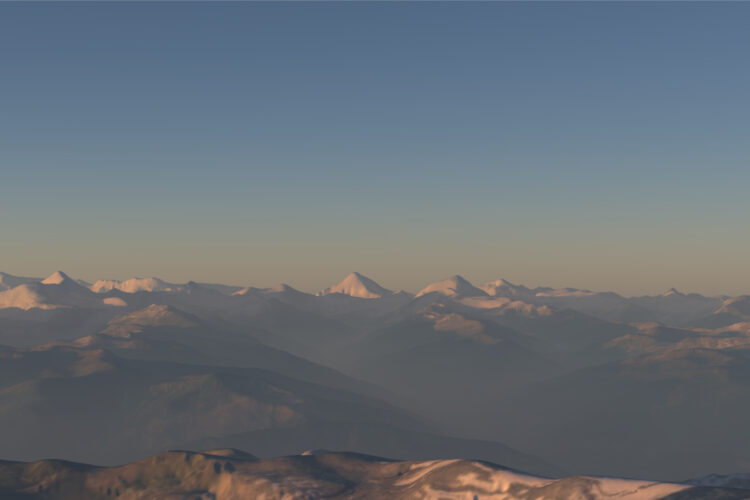Source code download
For now, we offer three versions of the model for download from this GitHub page. Both the data file with the fitted coefficients and source code that demonstrates how to access the data in the model and use them in a path tracer are provided.
The first version is the full model discussed in the paper, with all observer altitudes, full spectral range (including UV), the polarisation component, and the matching transmission function. This version was also released in ART 2.1.1 in 2022.
The second version we offer is not discussed in the paper, and is provided as a convenience for those rendering systems which currently already use the hemispherical 2012 Hošek model. As a drop-in replacement for these systems, we offer a ground level only version of our model for which the data file is much smaller than for the full model. The main advantage over the 2012 Hošek model is that in addition to generally increased realism, this can also provide after sunset sky dome patterns.
The third version is a wide spectral range (including short-wavelength infrared) version of the sky model we published in 2022. See its page for more information.
